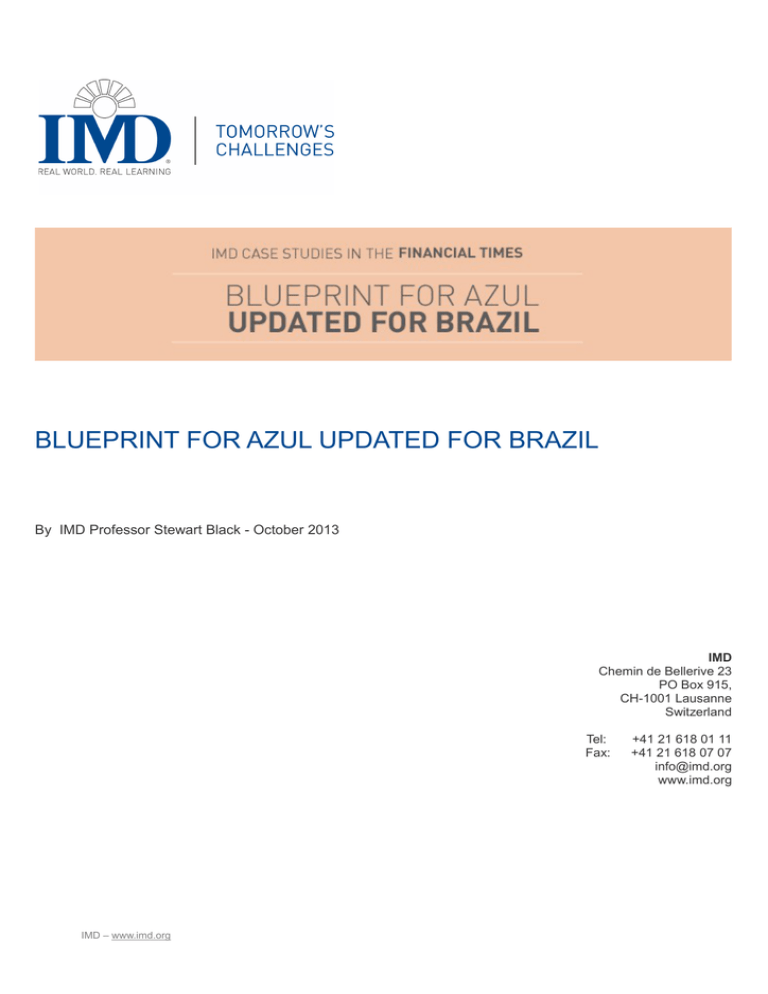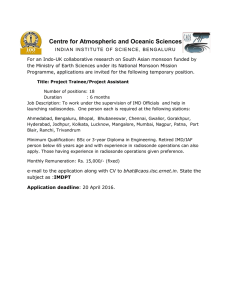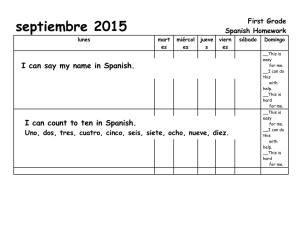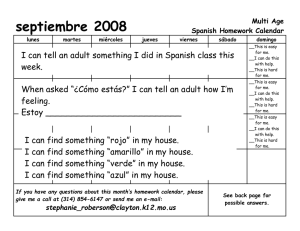BLUEPRINT FOR AZUL UPDATED FOR BRAZIL
advertisement

BLUEPRINT FOR AZUL UPDATED FOR BRAZIL By IMD Professor Stewart Black - October 2013 IMD Chemin de Bellerive 23 PO Box 915, CH-1001 Lausanne Switzerland Tel: Fax: IMD – www.imd.org +41 21 618 01 11 +41 21 618 07 07 info@imd.org www.imd.org BLUEPRINT FOR AZUL UPDATED FOR BRAZIL The story With two airlines controlling an estimated 80 per cent of domestic air travel in Brazil in 2008, David Neeleman was picking a potentially lopsided fight by launching an airline in the country. However, he had a strong record in the US and Canada, including founding New York-based airline JetBlue and co-founding WestJet, based in Calgary. Thus, he was confident in starting Azul, a lowcost carrier, in a country he knew well. He spoke Portuguese after working in Brazil during his 20s, and had citizenship rights having been born there while his American father was on a journalist posting. The challenge The hurdles and the opportunities for Azul were numerous. First, two incumbents, Tam and Gol, controlled a huge portion of the domestic market and had relatively low operating costs. While Brazil is a big country with a large population, high air fares, poor airport infrastructure and generally low incomes meant most people took long journeys by bus. Very few had ever taken a flight. At the same time, per capita income was rising, and as a result so was potential demand. The government had also pledged to spend $1.4bn on upgrading airports, in large part in preparation for the football World Cup in 2014 and potentially the 2016 Olympic Games, which were confirmed in 2009. The strategy Mr Neeleman was faced with the strategic decision of what to keep from his experiences at JetBlue, what to change and when to innovate. First, he determined that, like JetBlue, Azul must keep costs as low as possible to ensure it could offer prices close to bus fares and thereby stimulate demand and still make money. At the same time, while low fares would get people to fly Azul rather than rival airlines or taking the bus, Mr Neeleman knew their experience of the flight was what would encourage them to use the airline again and recommend it to others. Selecting staff with a high service mentality, from pilots to baggage handlers, became a top priority. As with JetBlue, to keep costs low he decided to fly out of secondary airports even in the big cities. However, unlike the US, getting from the heart of a city to airports on the outskirts was expensive by taxi, so he introduced a free bus service between key city centres and airports. A strong national identity had not been important to JetBlue, but it probably would be for Azul. Tam and Gol were flying Boeing and Airbus aircraft, but Azul would focus on flying aircraft made by Brazil’s Embraer, whose aeroplanes were also more fuel-efficient. To enhance this national affinity, the emblem on the tail fins was an image of Brazil with the states highlighted in different vibrant colours. With JetBlue, Mr Neeleman had focused on organic growth, including transcontinental flights. In Brazil, because most air travel occurred within a 500km radius of São Paulo, Mr Neeleman acquired Trip, a regional airline, in 2012. At JetBlue, Mr Neeleman focused on hiring people he knew and with whom he had worked. At Azul he went outside his circle to hire local people who knew the market, the companies and the government. The result Azul began operations at the outset of 2009. By the end of its first year it had 3 per cent of the market, reaching 5.1 per cent by the end of 2010, and 9 per cent by the end of 2011. With the acquisition of Trip, Azul is estimated to have ended 2012 with more than 14 per cent. IMD – www.imd.org Page 2/4 BLUEPRINT FOR AZUL UPDATED FOR BRAZIL Mr Neeleman says Azul was profitable throughout 2012. It is estimated to have had revenues of more than $2bn through that year and will have flown more than 12m passengers. The lessons Flexibility is crucial when applying the benefits of past experience to a new market. Treat each segment of strategy on its own merits, so that you can identify what is similar and what is different. In this way, Mr Neeleman was in a good position to see where to make the appropriate adjustments for this particular market. Striking such a balance is helped by being close to the market and from placing local executives into crucial positions. Speaking the language helps too. Stewart Black is Professor of Global Leadership and Strategy at IMD. He is the co-director of The Leadership Challenge program (TLC), which is designed for senior executives with significant responsibilities who must ensure their organization's success now and in the future. He also co-directs the Transition to Business Leadership (TBL) program. This article first appeared in the Financial Times on October 8th 2013. IMD – www.imd.org Page 3/4 BLUEPRINT FOR AZUL UPDATED FOR BRAZIL Related Programs Transition to Business Leadership - http://www.imd.org/tbl Turning functional managers into business leaders Program Directors Michael Watkins and Stewart Black Understand your strengths and areas of development relative to leading a business Formulate and implement a business strategy Design and structure business units to deliver results Build and lead cross-functional teams Part of IMD’s Program for Executive Development (PED) Leadership for Business Impact - http://www.imd.org/lbi Program Directors Allen Morrison and Stewart Black Enhance your capacity to resolve conflicts, motivate and inspire others, diagnose and resolve performance problems, and build a winning culture Gain tools and skills for leveraging and aligning organization resources Strengthen your ability to diagnose the need and readiness for change in your organization – and then lead successful change Gain personal insights into your own leadership development needs IMD – www.imd.org Page 4/4



